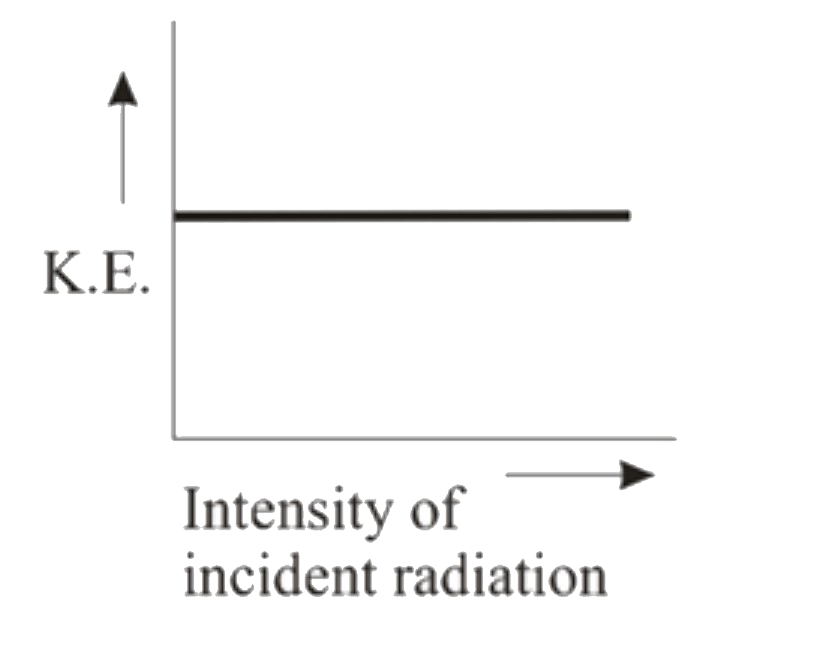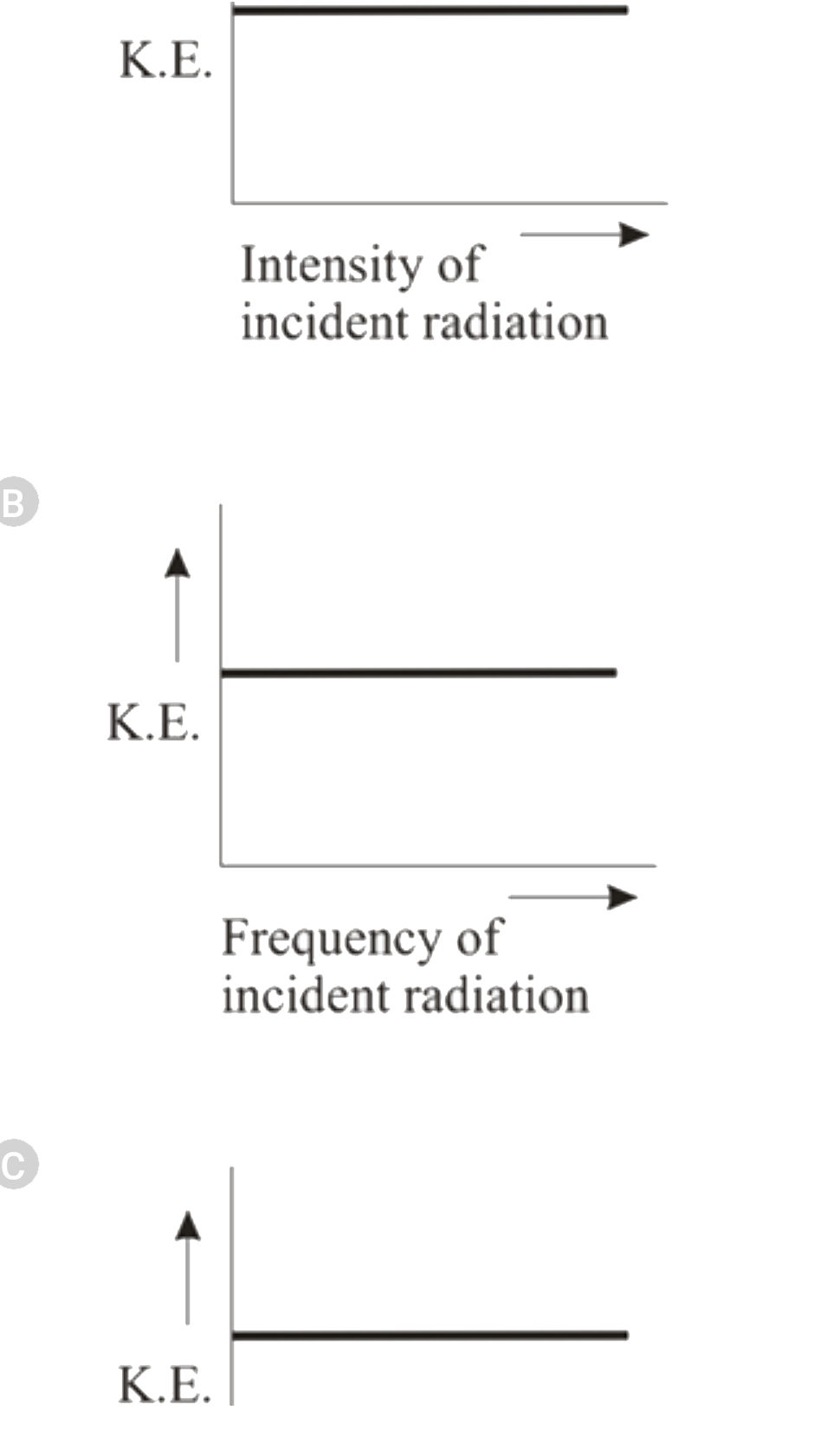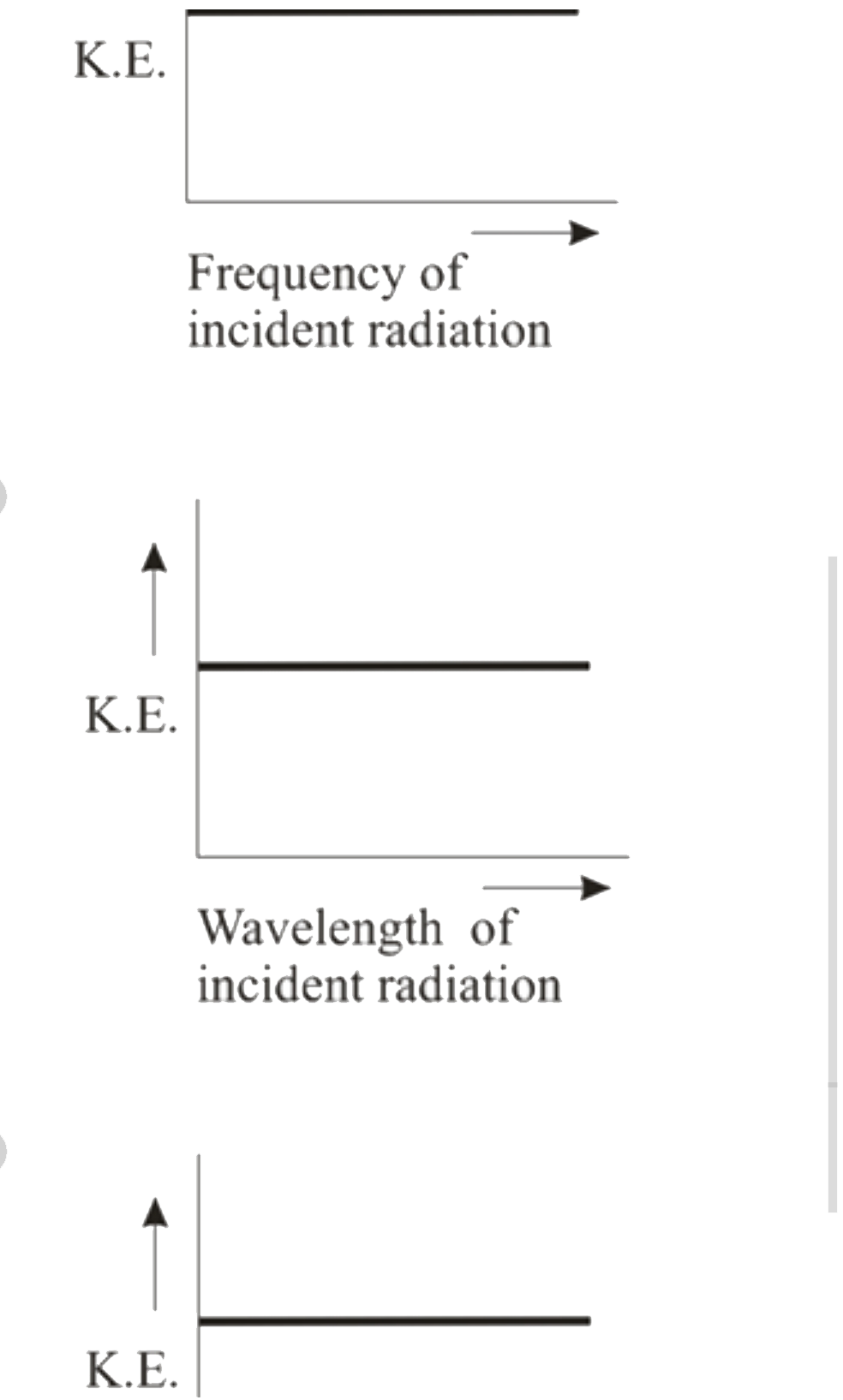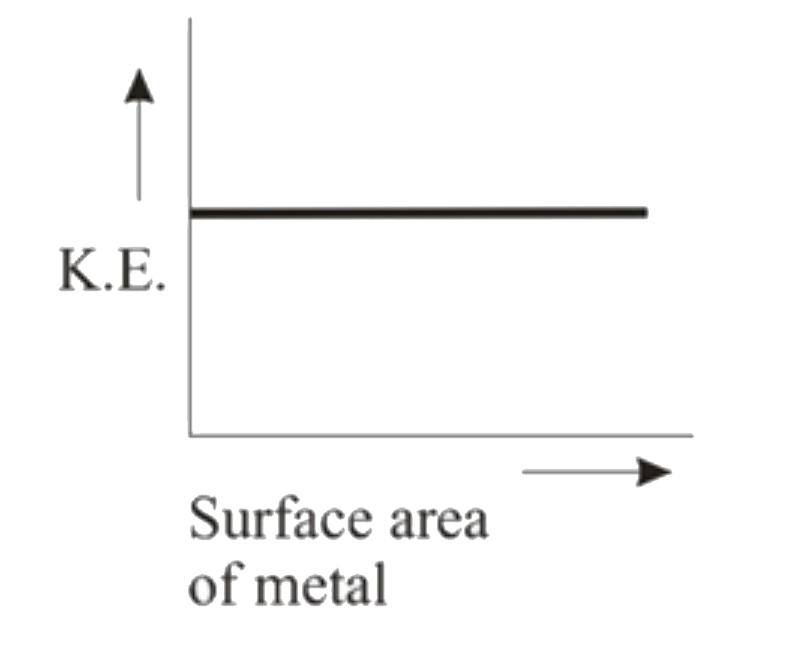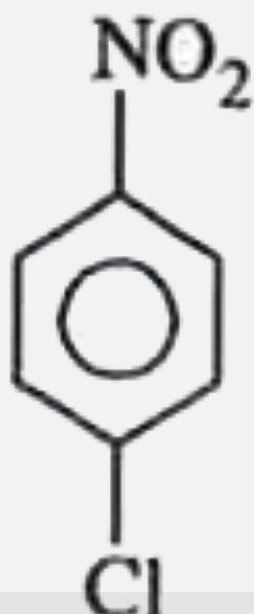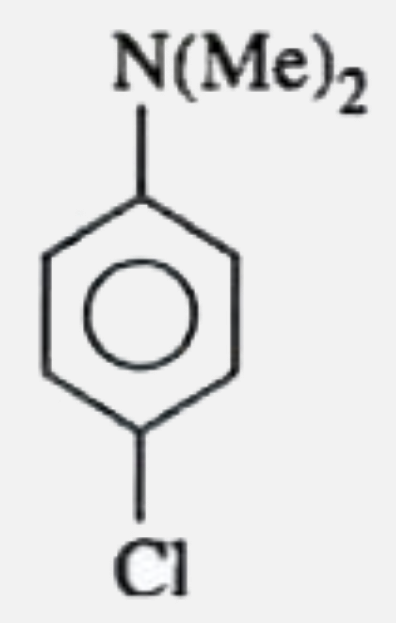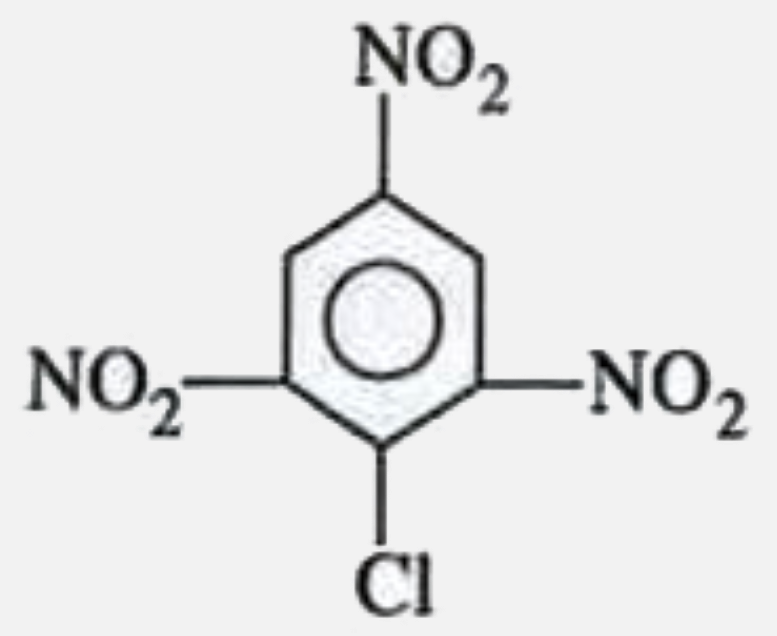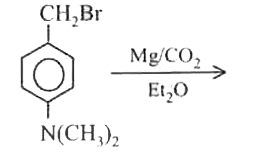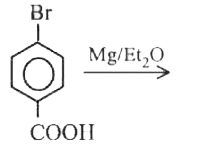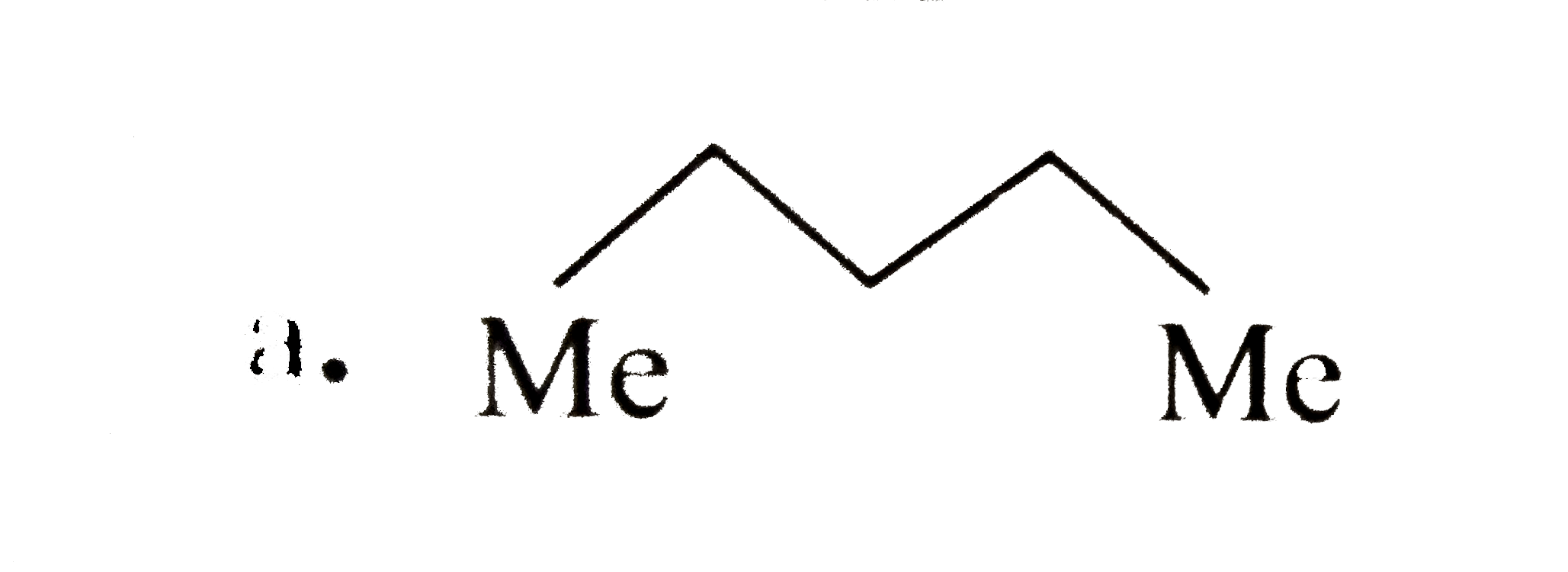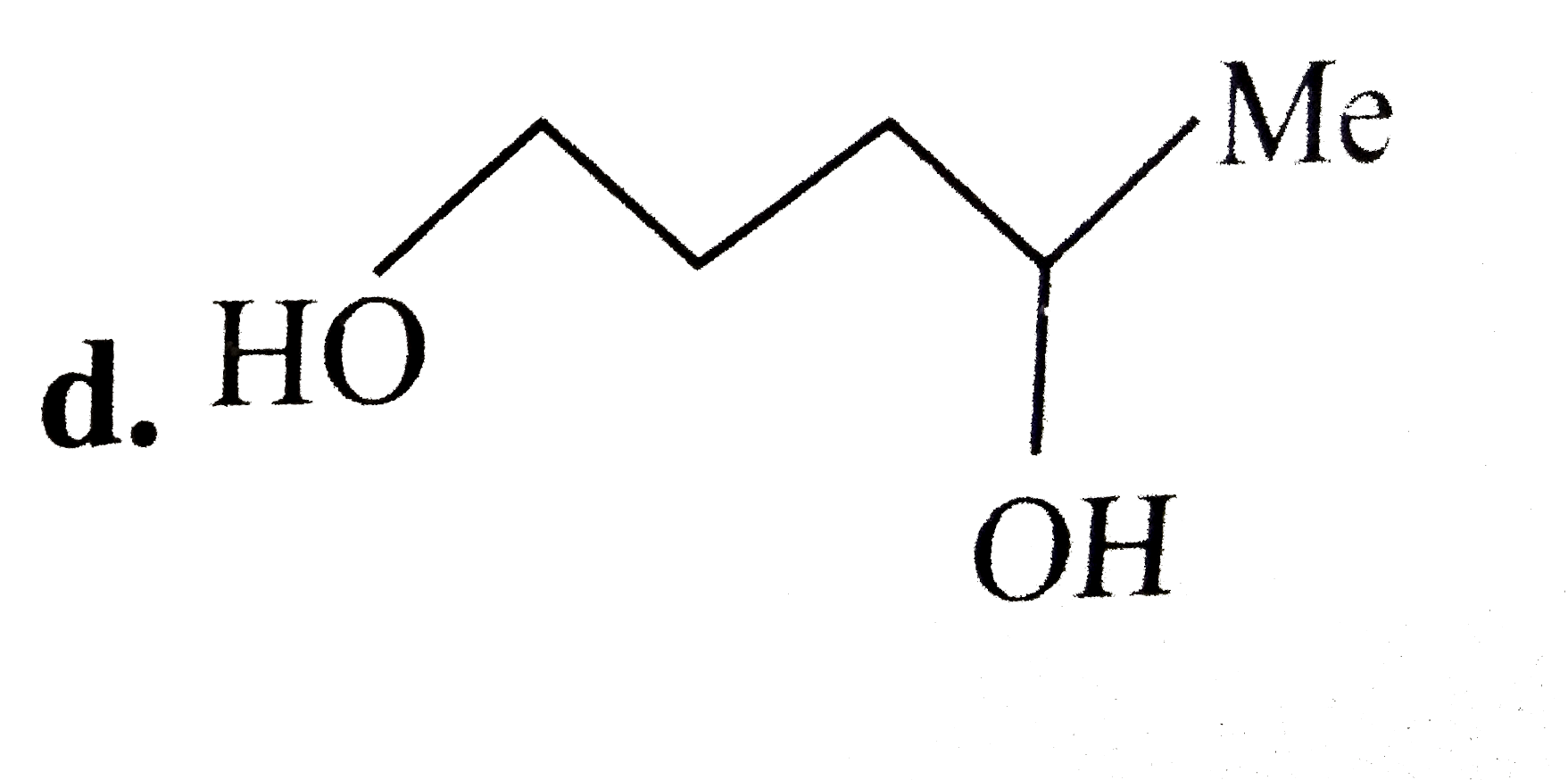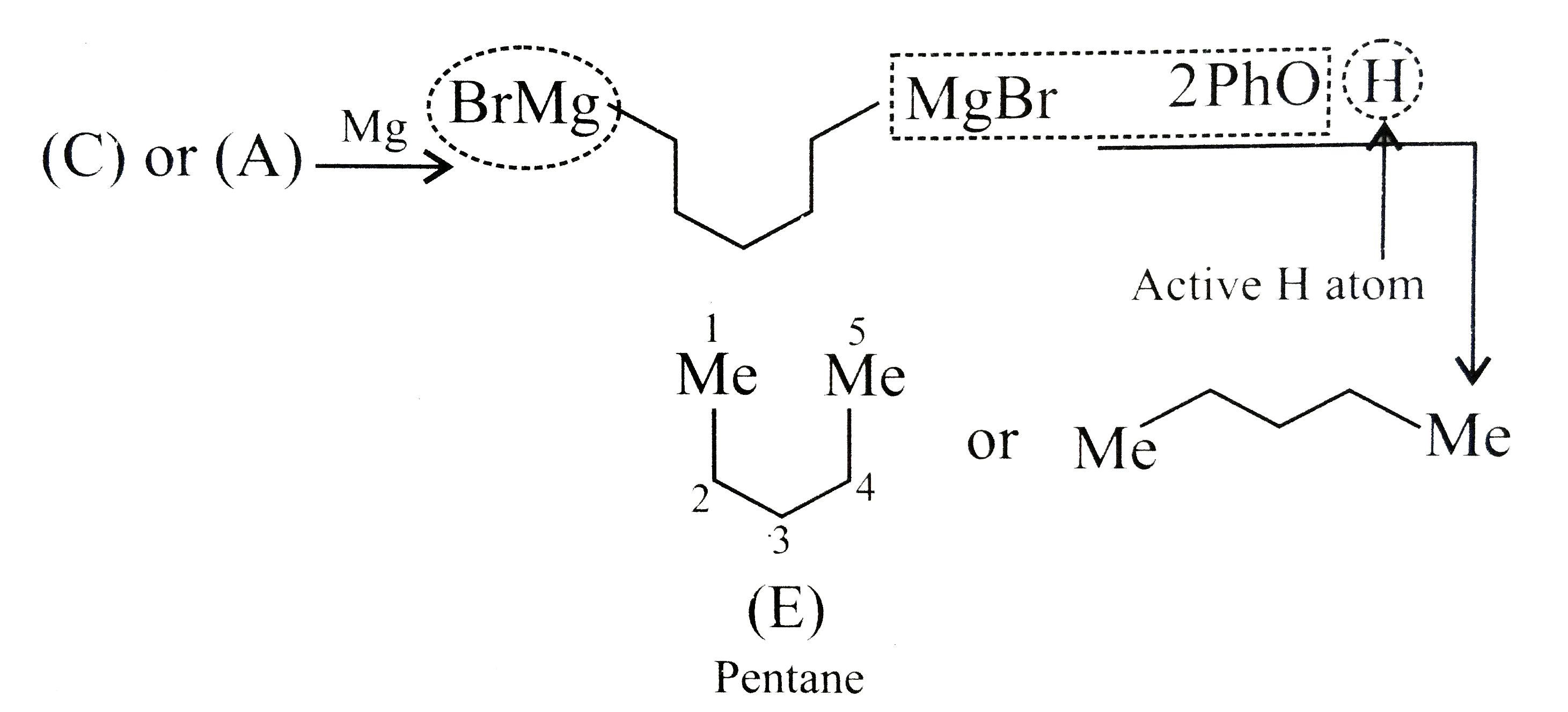Explore topic-wise InterviewSolutions in .
This section includes InterviewSolutions, each offering curated multiple-choice questions to sharpen your knowledge and support exam preparation. Choose a topic below to get started.
| 18601. |
XeO_(2)F_(2) is obtained by partial hydrolysis of |
|
Answer» `XeOF_(4)` |
|
| 18602. |
What is meant by linear arrangement of spheres in one direction ? |
Answer» Solution :(i) In a specific direction, there is only ONE possibility to ARRANGE the spheres in one direction.  (ii) In this arrangement, each sphere is in contact with TWO neighbouring spheres on eitherside. |
|
| 18603. |
When 0.01 mol sodium sulphate is dissolve in 1 kg of water then complete ionization of solution is observed. Find decrease in freezing point of such solution. (K_(f)=1.86" K kg mol"^(-1)) |
|
Answer» |
|
| 18604. |
Whichof the followingis more baic in aqueousmedium ? |
|
Answer»
|
|
| 18605. |
Which of the following yields propyl amine? |
|
Answer» `CH_(3)CH_(2)Broverset(1.NaCN)underset(2.LiAIH_(4))(rarr)` (b)`CH_(3)CH_(2)CHOoverset(NH_(3))(rarr)CH_(3)CH_(2)overset(O)overset(||)(CH)-NH_(2)overset(H_(2))underset(Ni)(rarr)CH_(3)CH_(2)CH_(2)NH_(2)` ( c) `CH_(3)CH_(2)CH_(2)CONH_(2)overset(Br_(2))underset(OH^(-))(rarr)CH_(3)CH_(2)CH_(2)NH_(2)` |
|
| 18606. |
Write the structure of monomers used for getting the following polymers: Buna-S |
Answer» SOLUTION :
|
|
| 18607. |
When calomel react with NH_(4)OH solution the compound formed is |
|
Answer» `NH_(2)-Hg-Cl` |
|
| 18608. |
Xenon reacts with PtF_(6) and gave an …………………… . |
| Answer» SOLUTION :ORANGE YELLOW SOLID `[XePtF_(6)]` | |
| 18609. |
Voltage of the cell Pt,H_2(1 atm)|HOCN(1.3xx10^(-3)M)||Ag^(+)(0.8M)|Ag(s) is 0.982 V. Calculate the K_a for HOCN. Neglect [H^+] because of oxidation of H_2(g).Ag^+etoAg(s)=0.8V |
|
Answer» |
|
| 18610. |
When is ferrimagnetism observed in a substance? |
| Answer» SOLUTION :When MAGNETIC moments of the domains are aligned PARALLEL and in ANTIPARALLEL DIRECTIONS in unequal numbers. | |
| 18611. |
Which of the following plot is correct about the kinetic energy of photoelectrons ? |
|
Answer»
|
|
| 18612. |
What is the solubility of CaF_2in a buffer solution containing 0.45 M HCOOH and 0.20 M HCOONa? K_(sp)(CaF_2) = 3.4 xx 10^(-11), K (HF) = 6.8 xx 10^(-4), K (HCOOH) = 1.7 xx 10^(-4) |
|
Answer» Solution :`2[CA^(2+)] =[F^(-)] + [HF] ` `2.75 XX 10^(-4) M` |
|
| 18613. |
When the temperature is increased, heat is supplied which increases the kinetic energy of the reacting molecules. This shall increase the number of collisions and ultimately the rate of reaction shall be enhanced. Arrhenius suggested a equation which describes K as a function of temperature, i.e. k=Ae^(-E_(a)//RT) where k= rate constant A= a constant (frequency factor) E_(a)= energy of activation log_(10)k=log_(10)A-(E_(a))/(2.303R)[(1)/(R )] Y=C+MX It is the equation of straight line with negative slope. On plotting log_(10)k against [(1)/(T)] we get a straight line as shown below : The slope gives activation energy and intercept gives frequency factor. Also log.(k_(2))/(k_(1))=(E_(a))/(2.303)[(T_(2)-T_(1))/(T_(1)T_(2))] A first order reaction is 50% complete in 30 minutes at 27^(@)C and 10 minutes at 47^(@)C . The energy of activation of the reaction is |
|
Answer» `43.84 kJ//mol` |
|
| 18614. |
The reagent/reagents required for the conversion of |
|
Answer» BAEYER's reagent `RCH=CHR'+2[O] overset(NalO_(4))to RCHO+R'CHO` An aqueous solution of `NaIO_(4)` (sodium per iodate) is called Lemieux reagent. |
|
| 18615. |
Which substance is used as an initiator in free radical addition polymerization reaction ? |
|
Answer» BENZOYL peroxide |
|
| 18616. |
When the temperature is increased, heat is supplied which increases the kinetic energy of the reacting molecules. This shall increase the number of collisions and ultimately the rate of reaction shall be enhanced. Arrhenius suggested a equation which describes K as a function of temperature, i.e. k=Ae^(-E_(a)//RT) where k= rate constant A= a constant (frequency factor) E_(a)= energy of activation log_(10)k=log_(10)A-(E_(a))/(2.303R)[(1)/(R )] Y=C+MX It is the equation of straight line with negative slope. On plotting log_(10)k against [(1)/(T)] we get a straight line as shown below : The slope gives activation energy and intercept gives frequency factor. Also log.(k_(2))/(k_(1))=(E_(a))/(2.303)[(T_(2)-T_(1))/(T_(1)T_(2))] The rate constant of a reaction is increased by 5% when its temperature is raised from 27^(@)C to 28^(@)C . The activation energy of the reaction in kJ/mol is |
|
Answer» `36.6` |
|
| 18617. |
When the temperature is increased, heat is supplied which increases the kinetic energy of the reacting molecules. This shall increase the number of collisions and ultimately the rate of reaction shall be enhanced. Arrhenius suggested a equation which describes K as a function of temperature, i.e. k=Ae^(-E_(a)//RT) where k= rate constant A= a constant (frequency factor) E_(a)= energy of activation log_(10)k=log_(10)A-(E_(a))/(2.303R)[(1)/(R )] Y=C+MX It is the equation of straight line with negative slope. On plotting log_(10)k against [(1)/(T)] we get a straight line as shown below : The slope gives activation energy and intercept gives frequency factor. Also log.(k_(2))/(k_(1))=(E_(a))/(2.303)[(T_(2)-T_(1))/(T_(1)T_(2))] The activation energy of a reaction is 9 kcal/mol. The increase in rate constant when its temperature is raised from 295 to 300K is approximately |
| Answer» ANSWER :D | |
| 18618. |
Which of the following are soluble in water? |
| Answer» Answer :A::D | |
| 18619. |
What happens when acetone reacts with: Phenyl hydrazine |
Answer» SOLUTION :
|
|
| 18620. |
Which one is disperse dye |
|
Answer» CONGO red |
|
| 18621. |
What is the geometrical shape of complex and hybridisation of central metal in [Fe(CO)_5] ? |
|
Answer» Tetrahedral, `sp^3` |
|
| 18622. |
When 2.0 gm of organic compound is burnt completely , 150 ml N_(2) gas at 27^(@)C and 0.821 atm is obtained. The mass percent of nitrogen in the compound is |
|
Answer» |
|
| 18623. |
To a 4 L of 0.2 M solution of NaOH, 2L of 0.5 M NaOH are added. The molarity of the resulting solution is : |
|
Answer» 0.7 M Moles of NaOH in 2 L solution `=0.5xx2=1.0` Total moles `=1.0+0.8=1.8` Total volume of solution `=4+2=6L` MOLARITY `=(1.8)/(6)=0.3` M |
|
| 18624. |
Which order is correct ? |
|
Answer» `N gt O(IP_(2))` |
|
| 18625. |
Which of the following amines gives carbylamine reaction ? |
|
Answer» `C_(2)H_(5)NH_(2)` |
|
| 18626. |
Which of the following statements are correct about HCOOH? |
|
Answer» It is a stronger acid than `CH_(3)COOH` |
|
| 18627. |
Which of the following has lowest pK_(b) value ? |
|
Answer» `NH_(3)` |
|
| 18628. |
Which of the following fibre is used for stitching during surgical operation? |
|
Answer» Terylene |
|
| 18629. |
What are artificial sweetening agents? Give example. |
|
Answer» SOLUTION :SYNTHETIC COMPOUNDS which IMPRINT a SWEET sensation and which imprint a sweet sensation and possess no or negligible nutritional value are called artificial sweeteners. e.g., saccharin, aspartame, sucralose, alitame. |
|
| 18630. |
When the temperature is increased, heat is supplied which increases the kinetic energy of the reacting molecules. This shall increase the number of collisions and ultimately the rate of reaction shall be enhanced. Arrhenius suggested a equation which describes K as a function of temperature, i.e. k=Ae^(-E_(a)//RT) where k= rate constant A= a constant (frequency factor) E_(a)= energy of activation log_(10)k=log_(10)A-(E_(a))/(2.303R)[(1)/(R )] Y=C+MX It is the equation of straight line with negative slope. On plotting log_(10)k against [(1)/(T)] we get a straight line as shown below : The slope gives activation energy and intercept gives frequency factor. Also log.(k_(2))/(k_(1))=(E_(a))/(2.303)[(T_(2)-T_(1))/(T_(1)T_(2))] The rate of certain reaction increases by 2.5 times when the temperature is raised from 300K to 310K. If k is the rate constant at 300K then rate constant at 310K will be equal to |
| Answer» ANSWER :C | |
| 18631. |
When the temperature is increased, heat is supplied which increases the kinetic energy of the reacting molecules. This shall increase the number of collisions and ultimately the rate of reaction shall be enhanced. Arrhenius suggested a equation which describes K as a function of temperature, i.e. k=Ae^(-E_(a)//RT) where k= rate constant A= a constant (frequency factor) E_(a)= energy of activation log_(10)k=log_(10)A-(E_(a))/(2.303R)[(1)/(R )] Y=C+MX It is the equation of straight line with negative slope. On plotting log_(10)k against [(1)/(T)] we get a straight line as shown below : The slope gives activation energy and intercept gives frequency factor. Also log.(k_(2))/(k_(1))=(E_(a))/(2.303)[(T_(2)-T_(1))/(T_(1)T_(2))] The rate of chemical reaction doubles for every 10^(@)C rise in temperature . If the temperature is increasedby 60^(@)C, the rate of reaction increases by about |
|
Answer» `20` TIMES |
|
| 18632. |
Which of the following optian is incorrect regarding N_(3)^(-)? |
|
Answer» AVERAGE oxidation state of N is `-(1)/(3)` |
|
| 18633. |
Which ofthefollowingoresareconcentratedbyfrothfloatation? |
|
Answer» HAEMETITE |
|
| 18634. |
underset((A))(3CH_(3)COCH_(3))underset(-H_(2)O)overset(HCl)to(CH_(3))_(2)C=CH-underset((B))(CO)-CH=C(CH_(3))_(2). This polymer (B) is obtained when acetone is saturated with HCl gas, B can be |
|
Answer» Phorone 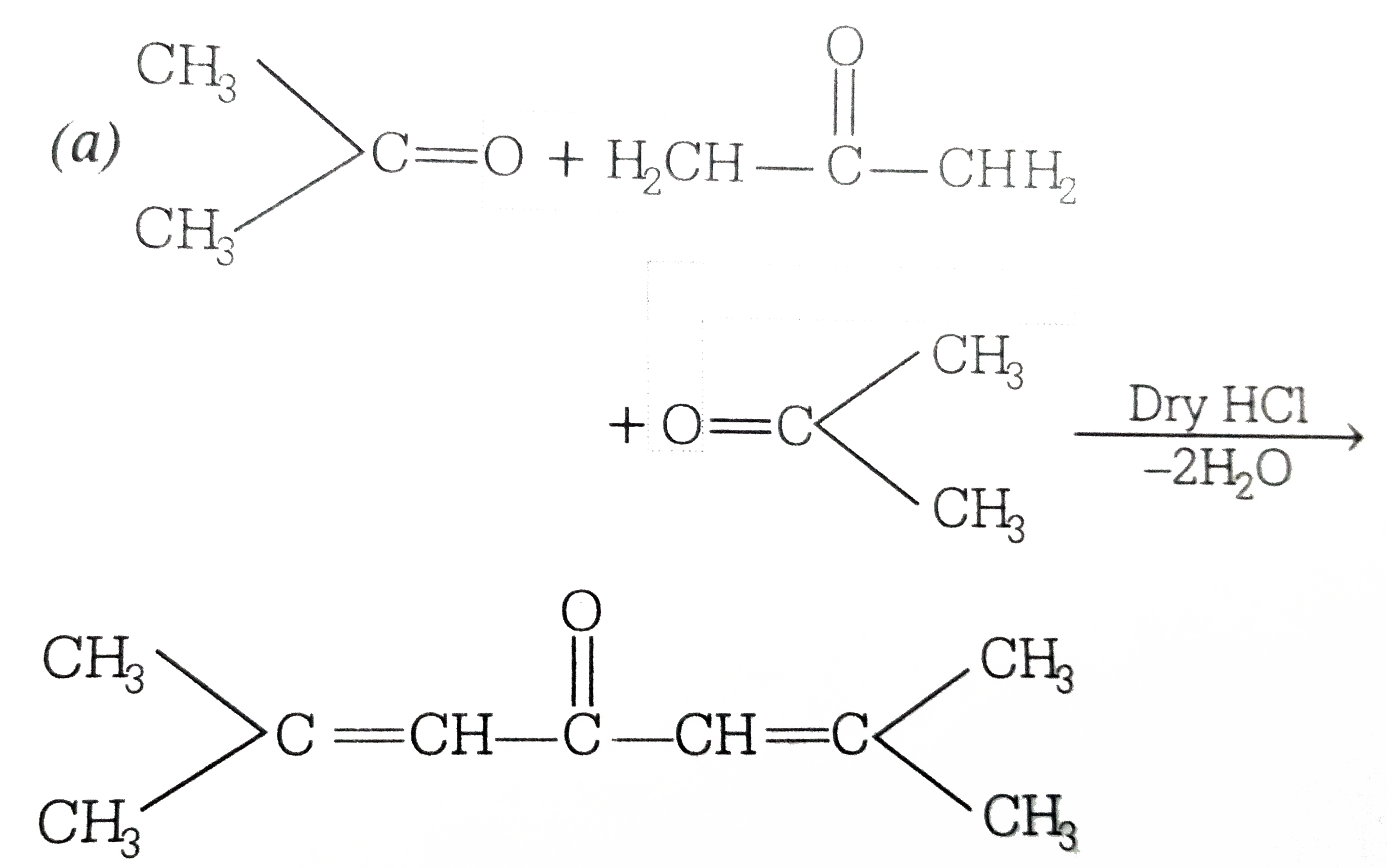 Phorone is self condensation product of ACETONE. It can ALSO be obtained from certain camphor COMPOUND. Phorone is combustible when exposed to heat or flame. |
|
| 18635. |
Write two differences between multimolecular colloids and macromolecular colloids. |
| Answer» Solution :(i) Multimolecular COLLOIDS are formed by AGGREGATION of small molecules (diameter `lt` lnm) while macromolecular colloids are formed from MACROMOLECULES and CONSIST of single molecules of colloidal size. (ii) Multimolecular colloids are generally lyophobic while macromolecular colloids are generally LYOPHILIC. | |
| 18636. |
Which one of the following is used as a substitute of wool for making blankets, sweaters? |
| Answer» Solution :orlon | |
| 18637. |
The structure of diborane (B_(2)H_(6)) contains |
|
Answer» FOUR 2c-2e BONDS and TWO 3C-2e bonds 3c-2e: B-H-B2c-2e: H-B-H |
|
| 18638. |
What is the solution in which photographic film is washed? What reaction takes place? |
|
Answer» Solution :HYPO solution `AgBr + 2 Na_(2)S_(2)O_(3) RIGHTARROW Na_(3)[AG(S_(2)O_(3))_(2)+ NaBr]` |
|
| 18639. |
Which of the elements listed below shows allotropic forms? |
|
Answer» Iodine |
|
| 18640. |
Which derivative of benzen among the following would undergo hydrolysis most readily with aqueous NaOH to give corresponding hydroxy derivative ? |
|
Answer»
|
|
| 18641. |
Which of the three, BF_(3), BCl_(3) and BBr_(3) is a weakest Lewis acid ? |
|
Answer» `BF_(3)` `BBr_(3)gt BCl_(3) gt BF_(3)` |
|
| 18642. |
Which of the following is not a correct order of solubility in water :- |
|
Answer» `LiOH lt NaOH lt KOH lt RbOH ` |
|
| 18643. |
Which of the following compounds form a stable Grignard reagent ? |
|
Answer» `CH_(3)-CH_(2)-O-CH_(2)-BR underset(Et_(2)O) overset(Mg)rarr` |
|
| 18644. |
When initial concentration of the reactant is doubled, the half-life period of a zero order reaction |
|
Answer» is tripled |
|
| 18645. |
Write the name, the structure and the magnetic behaviour of each one of the following complexes : (i) [Pt(NH_(3))_(2)Cl(NO_(2))] (ii) [Co(NH_(3))_(4)Cl_(2)]Cl (iii) Ni(CO)_(4)""(Al nos, Co = 27 , Ni = 28, Pt = 78) |
|
Answer» SOLUTION :(i) `[Pt(NH_(3))Cl(NO_(2))]` IUPACname : Diammine chloridenitrito - N- platinum (ii) Structure : Square planar `(dsp)^(2)` MAGNETICBEHAVIOUR : Diamagnetic (ii) `[Co(NH_(3))_(4)Cl_(2)]Cl` Tetraamine dichlorido cobalt (III) Chloride Hybriisation : `d^(2) sp^(3)` Shape : octahedral Magnetic property : diamagnetic . 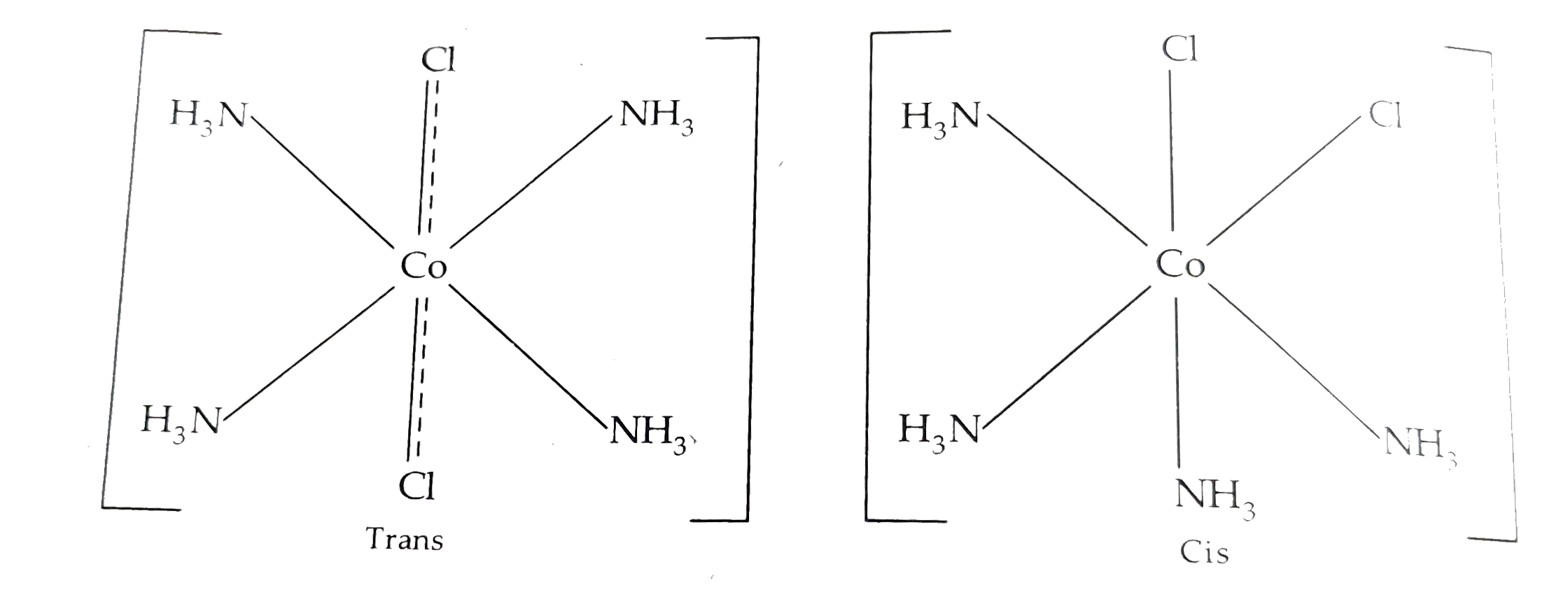 (iii) `[Ni(CO_(4))]` Tetracarbonylnickel `(O)` Behaviour: diamagnetic . Structure = Tetrahedral The complexes in which formed by hybridisation of one S and three p-orbita to obtain FOUR equivalent orbital ORIENTED tetrahedrally. 
|
|
| 18646. |
Which of the following is not an antibiotic ? |
|
Answer» CHLORAMPHENICOL |
|
| 18647. |
Which one of the following configuration represents a noble gas ? |
|
Answer» `1s^(2)2s^(2)2p^(6)3s^(2)3p^(6)3d^(10)4S^(2)` |
|
| 18648. |
Which of the following pairs represents only electrophiles ? |
|
Answer» `H_(3)O^(+),SO_(3)` |
|
| 18649. |
Which involves osmosis ? |
|
Answer» Crenation |
|




